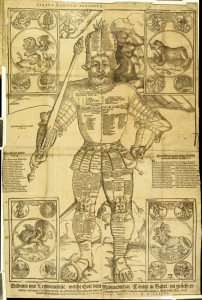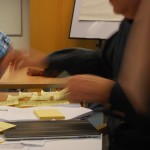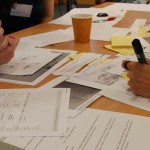While in Hamburg for Digital Humanities 2012, I chaired a session on 'Methods' and subsequently co-authored a report, "Here and There, Then and Now – Modelling Space and Time in the Humanities" (PDF) for the European Science Foundation (with Leif Isaksen, Shawn Day, and Ryan Shaw) for the Second NeDiMAH workshop on Space and Time in the Digital Humanities: "Here and There, Then and Now – Modelling Space and Time in the Humanities".
From the workshop abstract:
Spatio-temporal concepts are so ubiquitous that it is easy for us to forget that they are essential to everything we do. All expressions of Human culture are related to the dimensions of space and time in the manner of their production and consumption, the nature of their medium and the way in which they express these concepts themselves. This workshop seeks to identify innovative practices among the Digital Humanities community that explore, critique and re-present the spatial and temporal aspects of culture.
Although space and time are closely related, there are significant differences between them which may be exploited when theorizing and researching the Humanities. Among these are the different natures of their dimensionality (three dimensions vs. one), the seemingly static nature of space but enforced 'flow' of time, and the different methods we use to make the communicative leap across spatial and temporal distance. Every medium, whether textual, tactile, illustrative or audible (or some combination of them), exploits space and time differently in order to convey its message. The changes required to express the same concepts in different media (between written and performed music, for example), are often driven by different spatio-temporal requirements. Last of all, the impossibility (and perhaps undesirability) of fully representing a four-dimensional reality (whether real or fictional) mean that authors and artists must decide how to collapse this reality into the spatio-temporal limitations of a chosen medium. The nature of those choices can be as interesting as the expression itself.
This workshop allows those working with digital tools and techniques that manage, analyse and exploit spatial and temporal concepts in the Humanities to present a position paper for the purposes of wider discussion and debate. The position papers will discuss generalized themes related to use of spatio-temporal methods in the Digital Humanities with specific reference to one or more concrete applications or examples. Accepted papers have been divided into three themed sessions: Tools, Methods and Theory. This workshop is part of the ESF-funded NEDIMAH Network and organised by its Working Group on Space and Time. The group will also present its findings from the First NeDiMAH Workshop on Space and Time.



